Raphael - Drawings


Copy of the School of Athens
Parmigianino (Parma 1503-Casalmaggiore 1540) (artist)
Copy of the School of Athens

Verso
opy of the School of Athens - verso


The Virgin and Child with St Elizabeth
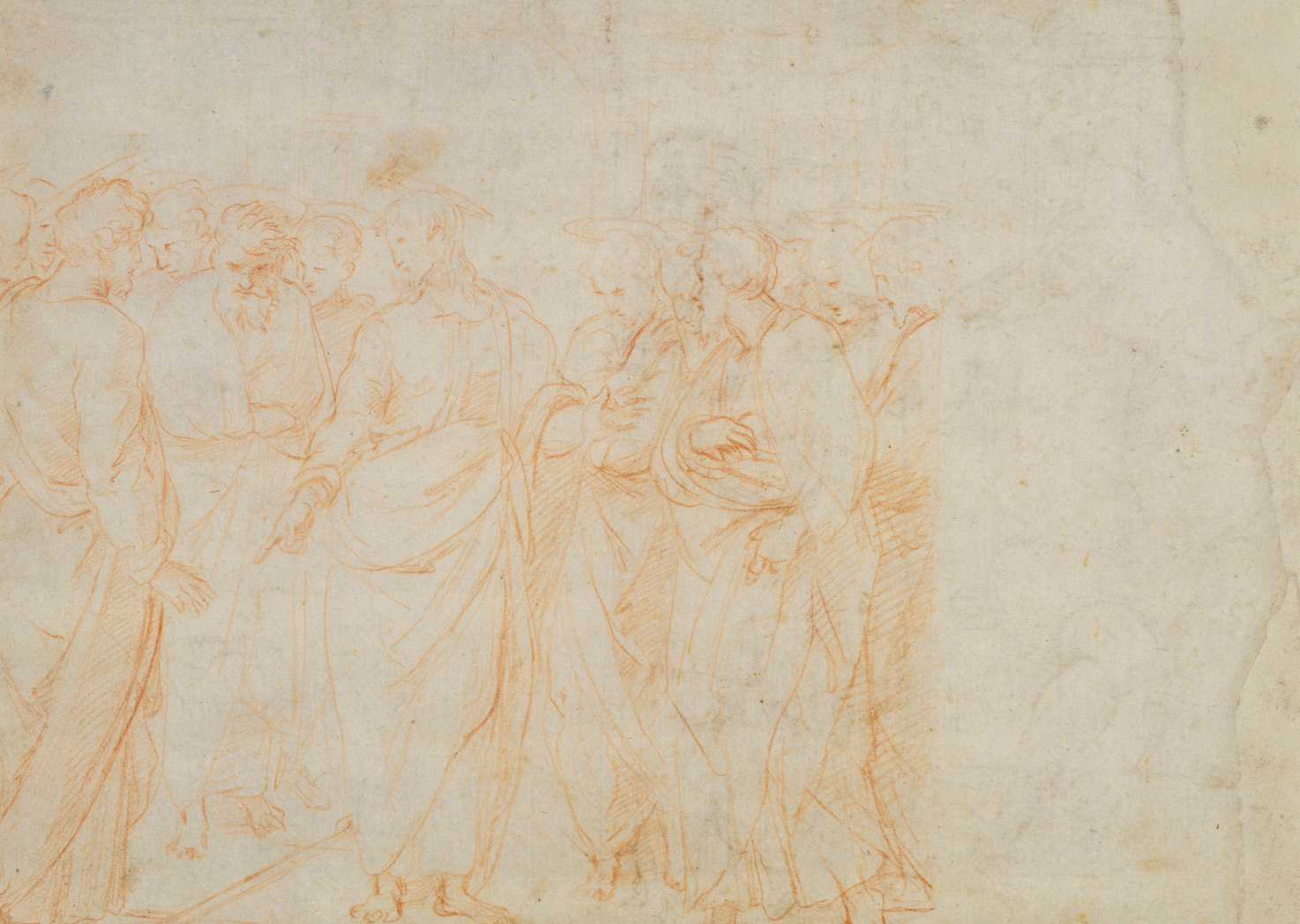



Massacre of the Innocents
c.1510
Red chalk over leadpoint, stylus and pouncing in black chalk
Study for the engraving by Marcantonio Raimondi. On the verso, a study for a salver with marine deities
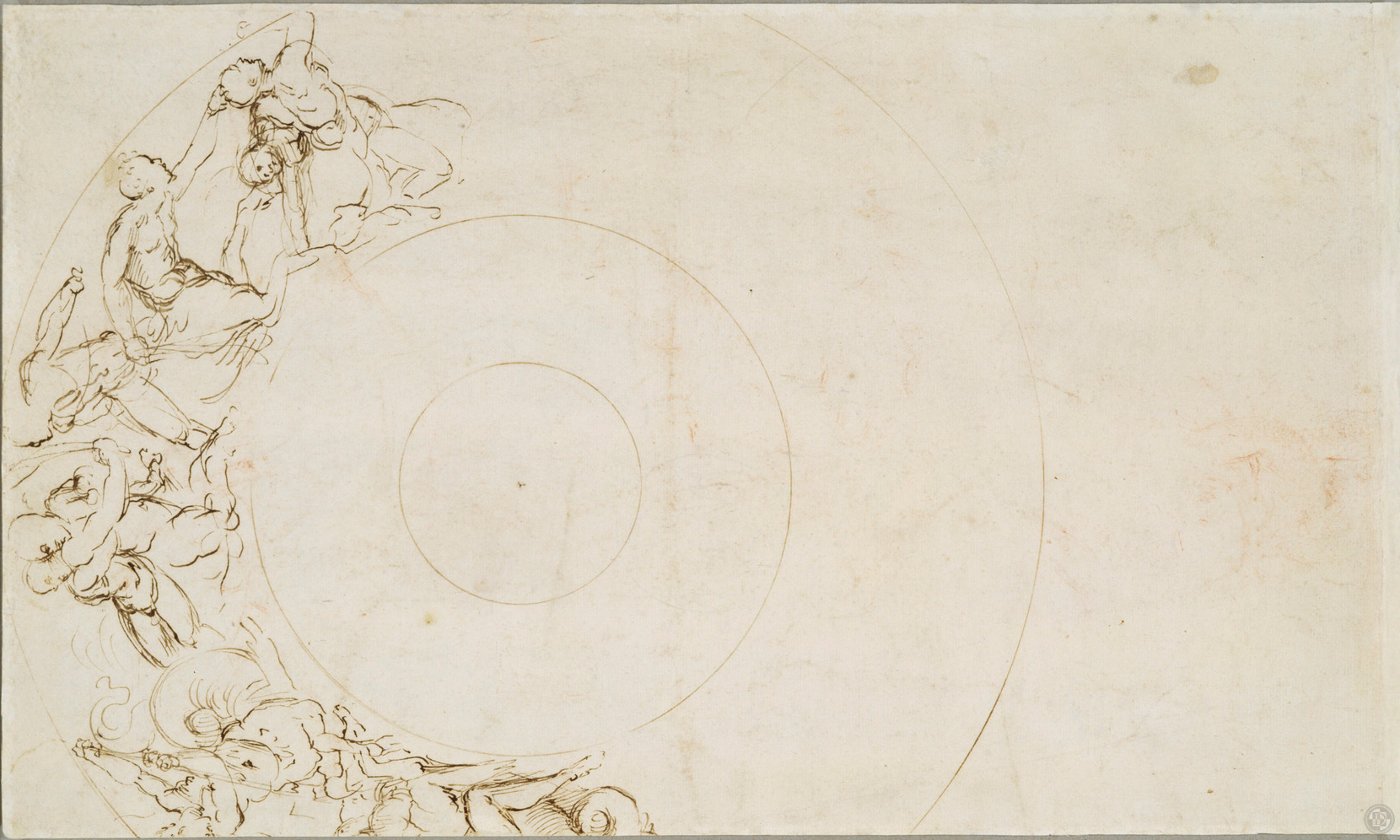
Massacre of the Innocents (Verso)

Hercules and the Hydra
c.1508

Hercules and the Nemean Lion
c.1508

Studies for the Parnassus
c.1509-10
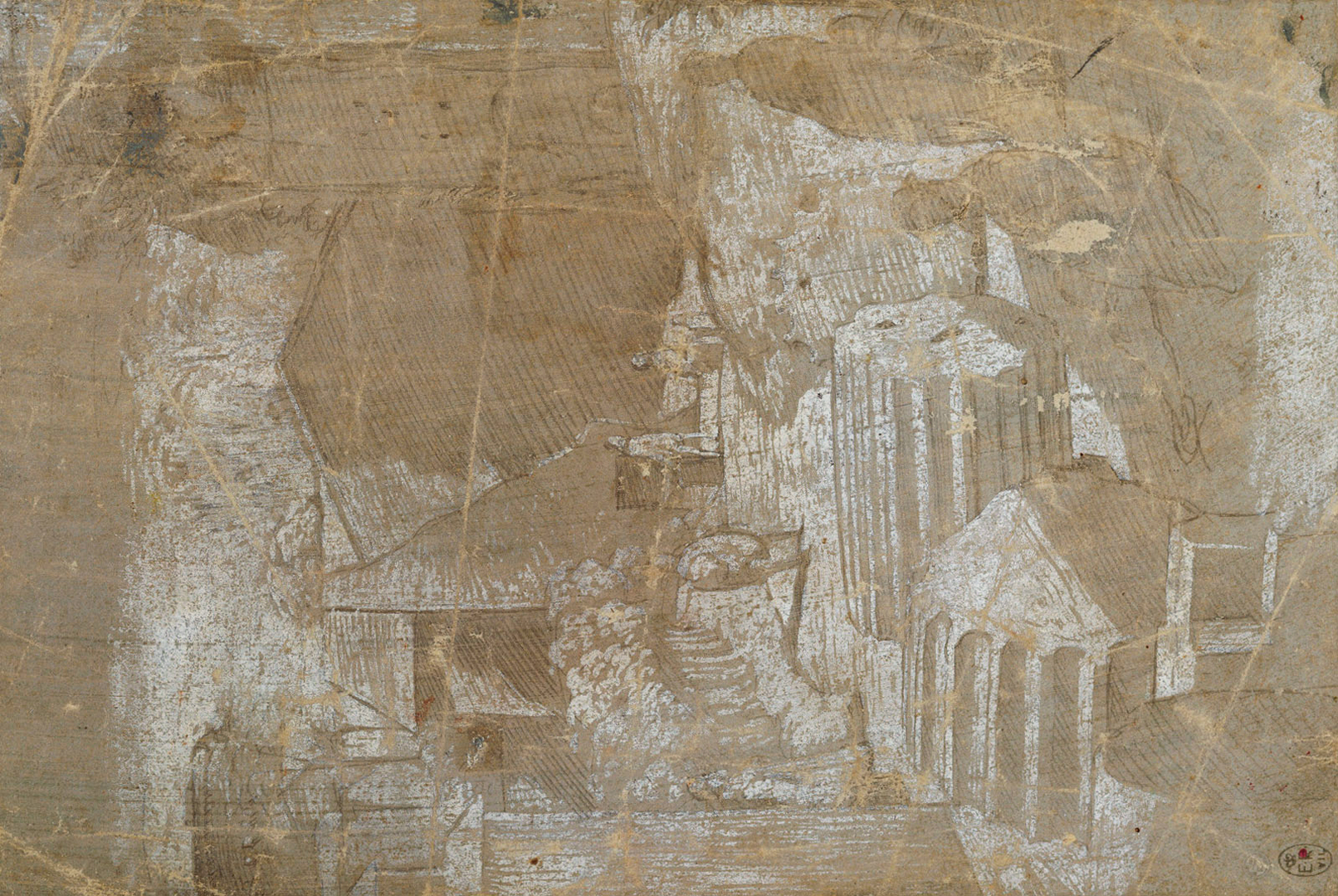
A landscape with figures and the ruins of a column
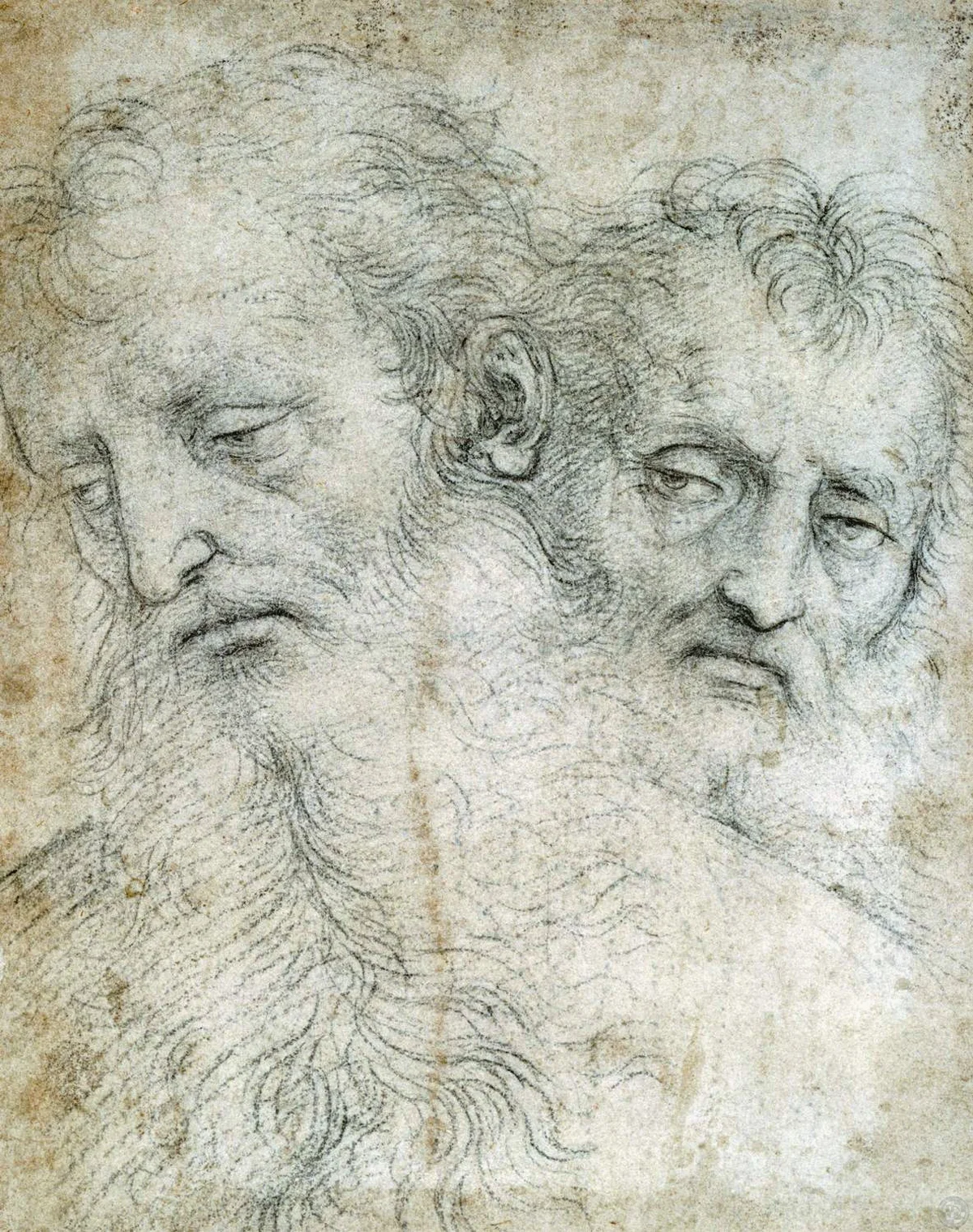
The heads of two Apostles
c. 1503
23.4 x 18.5 cm

Two Figures shielding themselves
c.1513-4
Black chalk
26.6 x 22.4 cm

Copy of Leo's Leda
c.1507
Pen and ink over black chalk underdrawing
31.0 x 19.2 cm
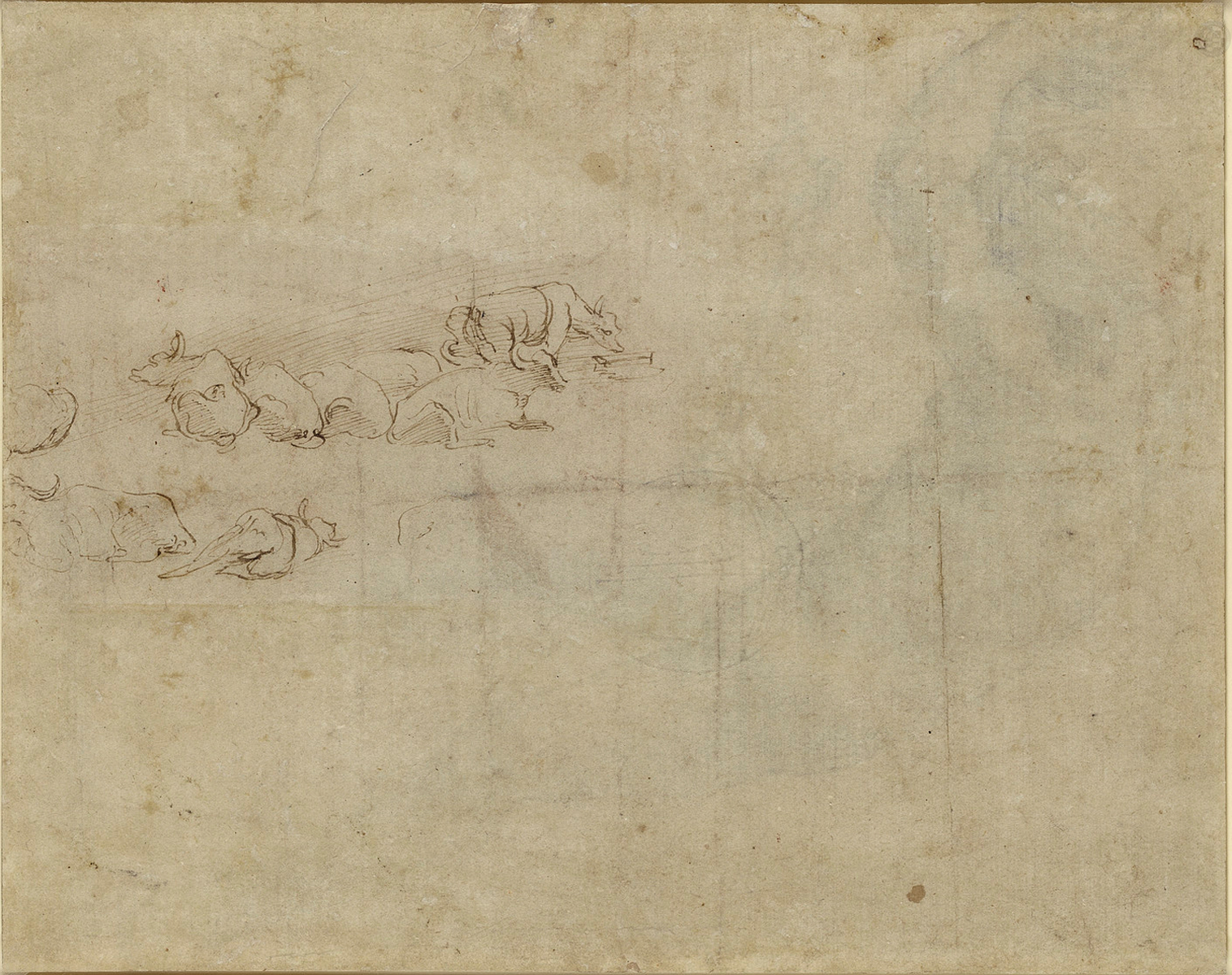
Cattle
c.1512
Black chalk
32 x 25.5 cm

Figure with an Axe
Verso - Cattle
c.1512
Black chalk
32 x 25.5 cm
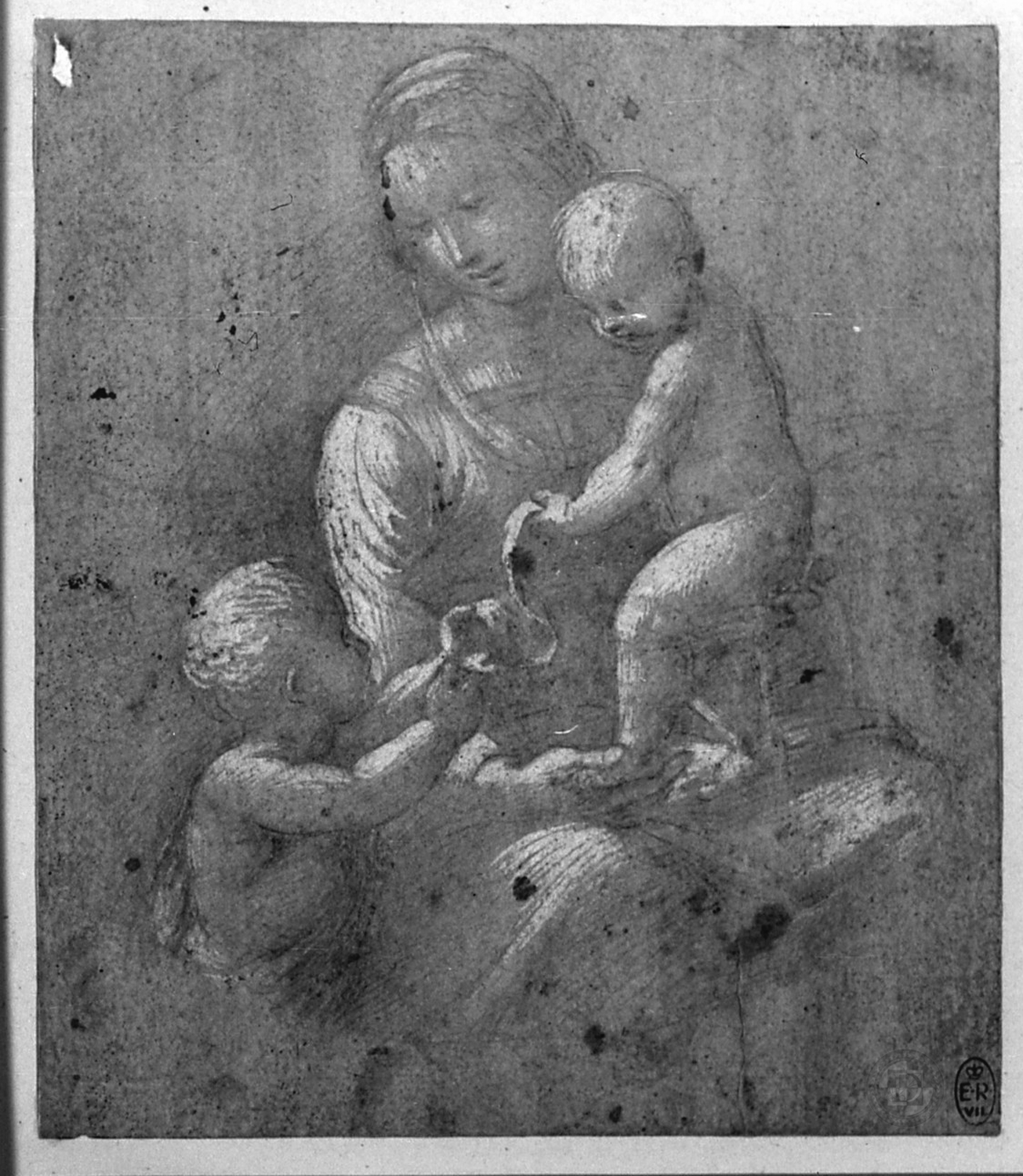
The Virgin and Child with the Infant St John
c.1505

Florentia
c. 1514

The Virgin and Child with St Elizabeth and the Infant St John
c.1506
23.4 x 18.0 cm
"Description:
A drawing showing the seated Virgin on the right, with the Christ Child, leaning against her; on the left is St Elizabeth with the Infant St. John the Baptist, who clutches the right arm of Christ. The scene is set in landscape.
This drawing dates from the time Raphael spent in Florence between 1504 and 1508, when he made a number of paintings of the Virgin and Child. Although this drawing has been connected to a surviving painting, the Canigiani Holy Family (now in Munich), it differs significantly from the finished work and may have been made with another project in mind."

Christ’s Charge to Peter
c.1514
Red chalk (offset)
25.7 x 37.5 cm
Description:
"Shortly after Giovanni de’ Medici was elected as Pope Leo X in 1513, he commissioned Raphael to produce a series of large cartoons of the Acts of the Apostles, to be transported to Brussels and woven as tapestries for the Sistine Chapel. Seven of the cartoons survive, now in the Victoria and Albert Museum on loan from Her Majesty The Queen. The present sheet is an offset from a preparatory drawing for the cartoon of Christ’s Charge to Peter. It was made by laying a blank, slightly dampened sheet of paper over a chalk drawing, and pressing or rubbing the two to produce a reversed impression. Offsets could be used during the preparatory process to monitor the final effect of a composition when the end product also reversed the design, as with mosaics, prints and tapestries, which are woven from the back.
This is one of nine autograph drawings by Raphael that can be shown to have been acquired by George III. It was seen hanging in the Palazzo Bonfiglioli by Jonathan Richardson when he visited Bologna in 1719, though - unlike many drawings framed for display - the sheet has suffered little from the effects of light, damp or insects. After entering the Royal Collection, however, the drawing was dismissed as a derivation after the master and separated from the other works by Raphael: ‘The Heads are noble Ideas, but the Christ and St: Peter are very disagreeable, being half Studys only of the naked Body. The thought stolen from Raphael’s design in the Cartoon’.
Catalogue entry adapted from George III & Queen Charlotte: Patronage, Collecting and Court Taste, London, 2004"

The Three Graces
c.1517-18
Red chalk over some stylus underdrawing
20.3 x 25.8 cm
Description:
"The drawing shows the same female model drawn three times in succession, three-quarter length to left.
Around 1517 Raphael’s assistants frescoed the vault of the garden loggia of Agostino Chigi’s villa in Rome, now known as the Villa Farnesina. This is a study, from a single model in three consecutive poses, for the Three Graces pouring a libation in the Wedding Feast of Cupid and Psyche. Though Raphael executed none of the frescoes himself, drawings such as this show that he was closely involved in their design.
This is a study for the Three Graces sprinkling a libation over the married couple at the right of the Wedding Feast of Cupid and Psyche. It is one of two fictive ‘tapestries’ frescoed on part of the vault of the garden loggia of Agostino Chigi’s suburban villa on the banks of the Tiber, now known as the Villa Farnesina. The two main areas depict episodes from the story of Psyche, however other scenes were never executed presumably because of the constant threat of flooding from the river.
The red chalk studies for the project present perhaps the most difficult problem of attribution in the whole of Raphael’s oeuvre. The issue is confused by highly competent drawings by members of the studio, by the existence of good copies after lost originals, and by the workshop practice of taking offsets which, as seen here at upper right, can blur some of the lines of the originals. Further, there seems to be no difference in function between the life studies attributable to Raphael himself and those by his assistants, implying that Raphael must have been involved in preparing at least some of the scenes at this routine level. The present study, probably from a single model in three consecutive poses, is one of few studies for the project that have hardly ever been disputed as the work of Raphael himself. The draughtsman is fully in control of his medium, taking the drawing as far as necessary and no further, defining highlights simply by leaving areas of paper blank.
But the clear and harmonious light in the drawing became harsh and incoherent in the painting, and a letter from Leonardo Sellaio in Rome to Michelangelo in Florence opined that the frescoes were ‘a disgrace for a great artist’. Though partisan, Sellaio’s criticism of the frescoes was not unfounded. The coarseness and inconsistency of effect of the frescoes is especially noticeable in the crown of the vault, which would have been executed first: Raphael seems to have become aware of this lapse in control over his studio, for the subsequent pendentives (triangular panels) are of higher quality, suggesting that the master took more control over the execution of the later passages.
Sellaio’s letter is dated 1 January 1518, probably following the Florentine calendar and thus 1519 modern style. This is one of the few documents of the progress of the commission, and suggests that the frescoes were open to view by the end of 1518.
Catalogue entry adapted from The Art of Italy in the Royal Collection: Renaissance and Baroque, London, 2007"
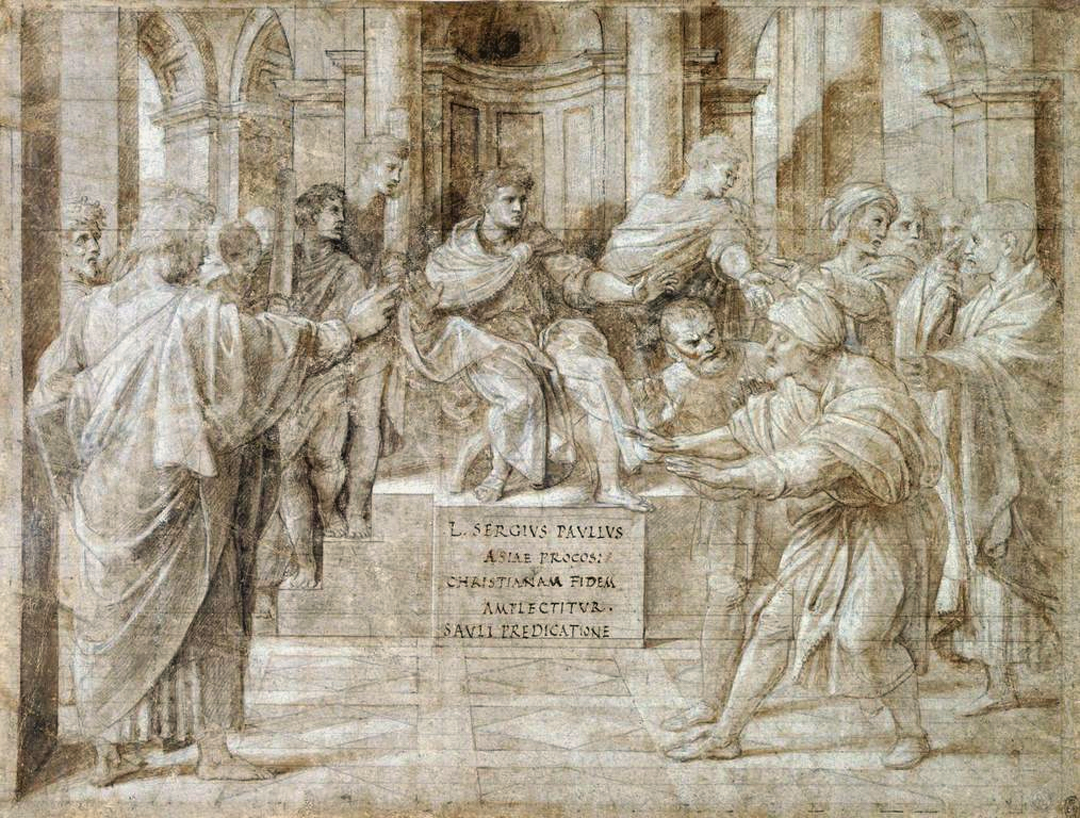
The Conversion of the Proconsul
c.1514
26.9 x 35.4 cm
"In 1513 Pope Leo X commissioned Raphael to design a set of tapestries of the Acts of the Apostles, to be hung in the Sistine Chapel. Raphael painted ten full-size cartoons as models for the weavers in Brussels; the seven surviving cartoons were purchased by the future Charles I in 1623, and have been on loan to the Victoria and Albert Museum since 1865. In this elaborate study St Paul strikes blind the magician Elymas, thus converting the Roman proconsul Sergius Paulus to Christianity.
This drawing is Raphael’s study for the cartoon of the Conversion of the Proconsul, also known as the Blinding of Elymas. The episode is described in Acts (13:6-12). The magician Elymas tried to prevent the Roman proconsul Sergius Paulus from hearing the preaching of Paul and Barnabas; Paul struck Elymas blind, and thereby the proconsul was converted.
It forms part of the commission by Leo X to Raphael to design a set of tapestries of the Acts of the Apostles for the Sistine Chapel. As the artist would have no control over the weaving of the tapestries in Flanders, he therefore devoted an unusual amount of his own time to the execution of the full-size cartoons that served as models for the weavers. The date of the commission is unknown, though it must have post-dated the election of Leo X in March 1513. The seven surviving cartoons have been in the Royal Collection since 1623, and on loan to the Victoria and Albert Museum since 1865.
This drawing is elaborately executed with a detailed perspective grid and a combination of metalpoint and brown wash, unlike the simpler pen-and-wash of most of the modelli produced in Raphael’s workshop; crude touches by another hand can be seen in the pen reinforcement of some outlines. The sheet is not squared for enlargement, and despite its degree of cogitation this may still have been an investigative sheet that combined several elements of the creative process - perspective, draperies, facial expressions - and served as the basis for a more explicit, less suggestive modello. The drawing was also subsequently used as the model for an engraving dated 1516 by Agostino Veneziano, corresponding in size and in all details.
What was probably this drawing was seen in Rome in 1688 by Nicodemus Tessin, in the collection of Queen Christina of Sweden. Queen Christina’s drawings passed, after her death in 1689, through the hands of Cardinal Decio Azzolino to his nephew, Pompeo Azzolino, and thence probably to Livio Odescalchi. After Odescalchi’s death in 1713 some of the collection was dispersed, though the majority of the drawings remained together until 1790 when they were sold to Haarlem, where they remain. The note in the Royal Collection that ‘This drawing was bought at Rome’, does imply that it was purchased singly by one of George III’s agents, and not as part of a large collection.
Inscribed by the artist, lower centre: L. SERGIVS PAVLIVS / ASIAE PROCOS: / CHRISTIANAM FIDEM / AMPLECTITVR. / SAVLI PREDICATIONE
Catalogue entry adapted from The Art of Italy in the Royal Collection: Renaissance and Baroque, London, 2007"
























